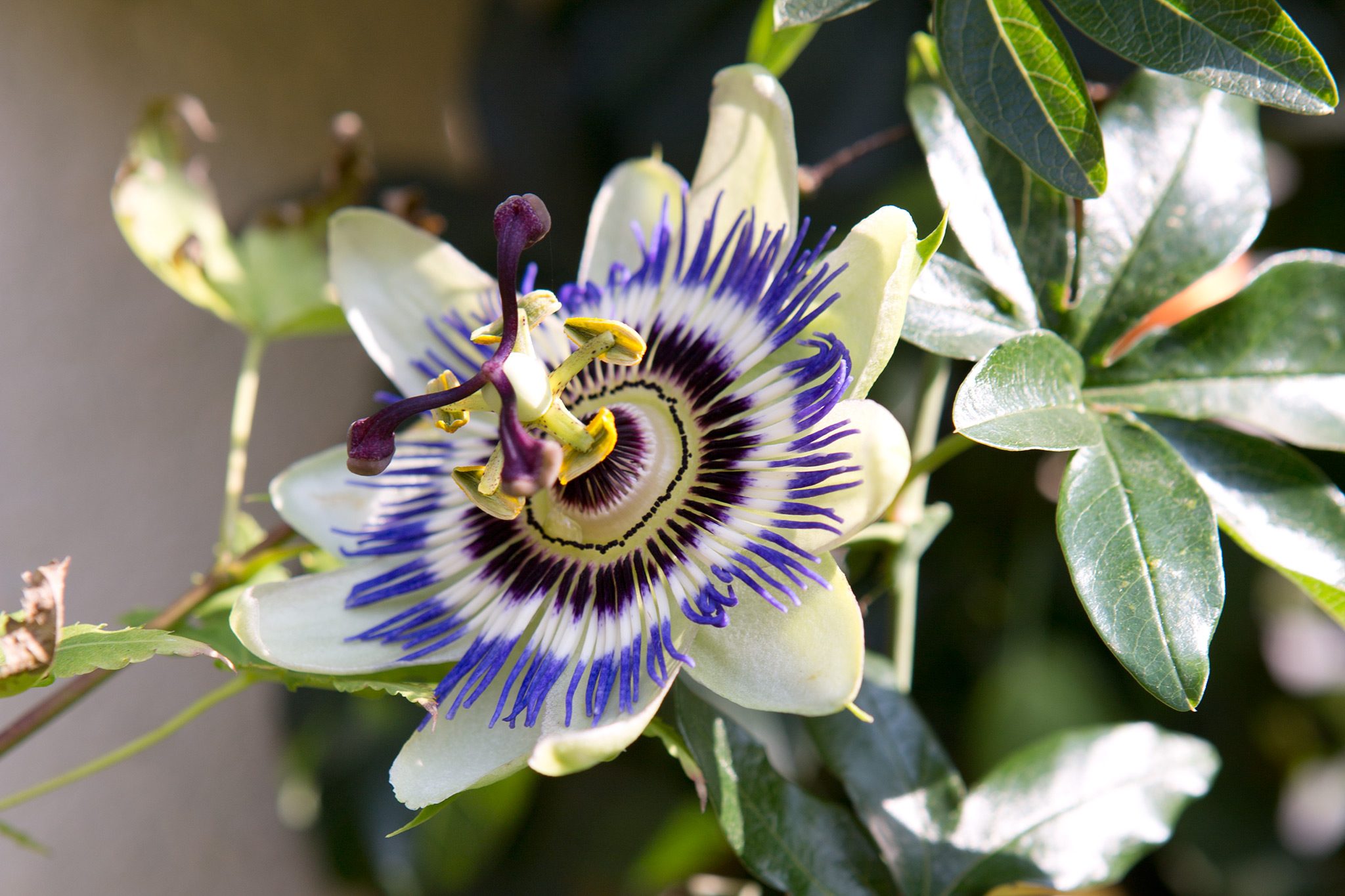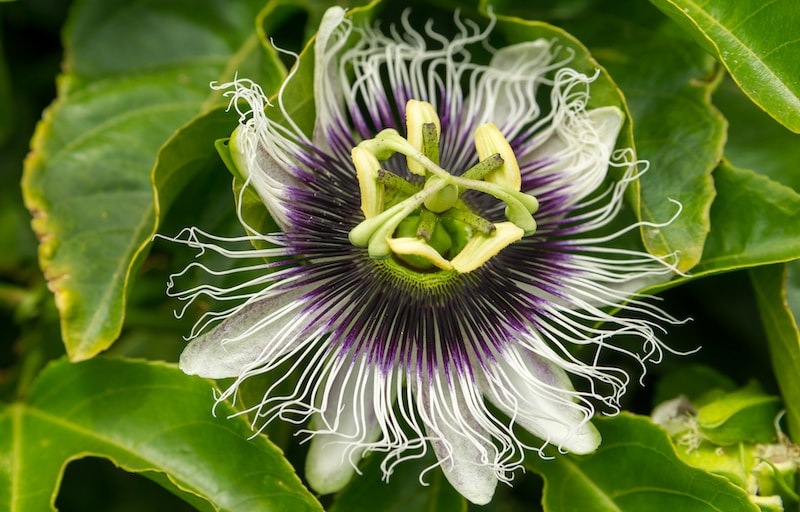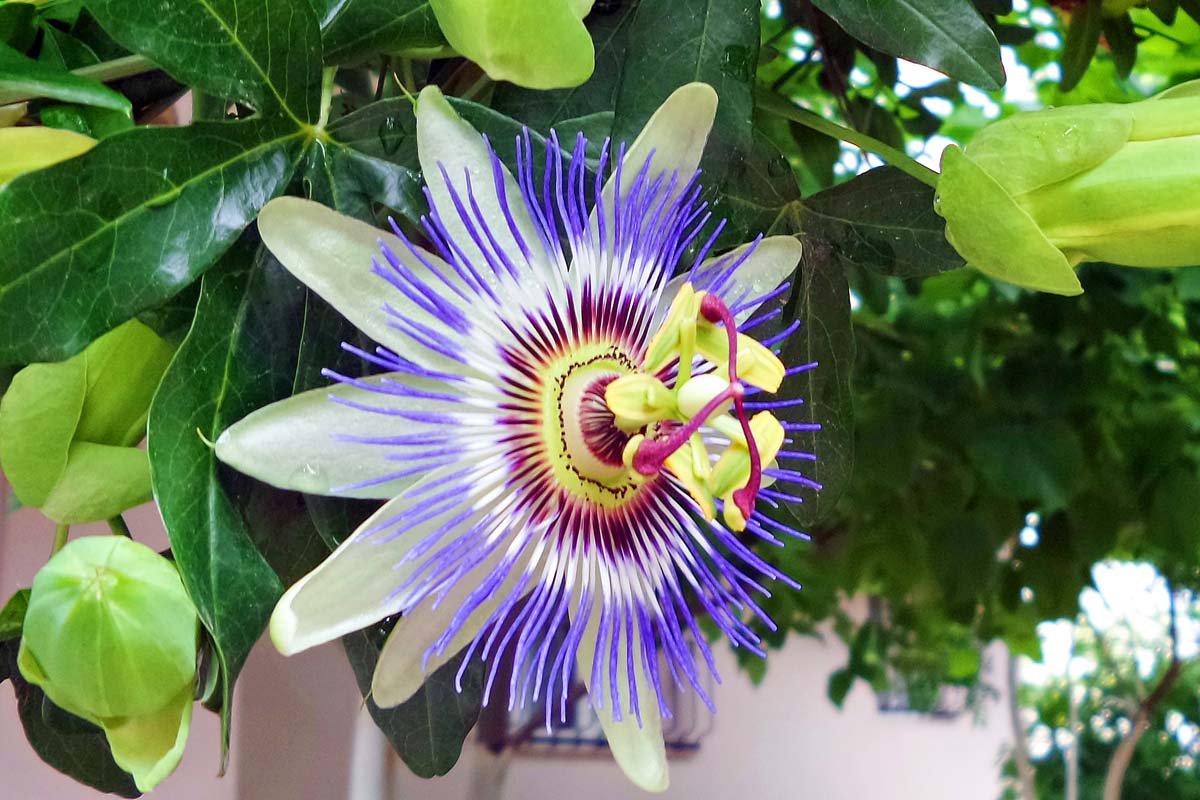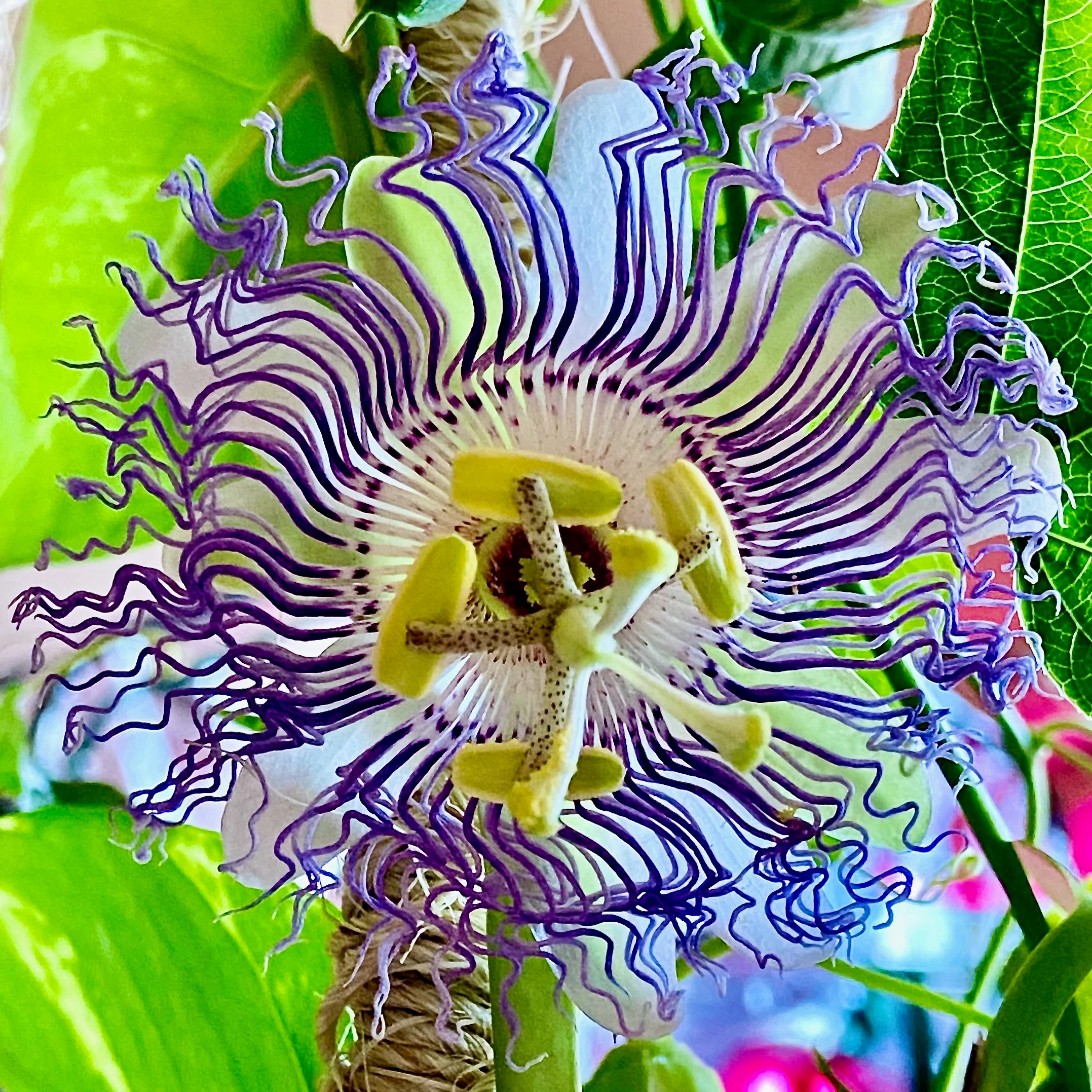If you’re looking to add a touch of exotic beauty to your garden, learning how to grow passion flower is a fantastic choice. This stunning vine, known for its intricate and vibrant blooms, can transform any garden into a tropical paradise. In this guide, we’ll walk you through everything you need to know about cultivating passion flowers, from planting to maintenance. Whether you’re a seasoned gardener or a curious beginner, you’ll find all the information you need to successfully grow this mesmerizing plant.

How to Grow Passion Flower
Choosing the right spot
Selecting the ideal location for your passion flowers is crucial for their growth and blooming. Passion flowers thrive in locations that receive plenty of sunlight, ideally 6-8 hours per day. However, they can also tolerate partial shade, making them versatile for different garden settings. It’s essential to choose a spot with well-drained soil to prevent waterlogging, which can lead to root rot. Passion flowers prefer soil that remains moist but not waterlogged. An ideal location would be against a wall, trellis, or arbor, providing the necessary support for their climbing nature. This setup not only supports their growth but also allows their stunning blooms to be prominently displayed.
Planting passion flowers
Proper planting techniques are vital for establishing healthy passion flowers. Begin by preparing the soil in your chosen location. Dig a hole that is approximately 1.5 times wider than the root ball and of equal depth. Loosen the soil around the planting area to encourage root growth and ensure good soil aeration. Carefully place the passion flower plant into the hole, ensuring it is at the same level it was in its nursery container. Backfill the hole with the original soil, gently firming it around the roots to remove any air pockets. This step is crucial for stabilizing the plant and promoting healthy root development.
When planting multiple passion flower plants, space them 5 to 6 feet apart. This spacing allows them ample room to grow and spread, preventing overcrowding and ensuring each plant receives adequate sunlight and nutrients.

Watering Passion Flowers
Watering is a critical aspect of caring for passion flowers, as consistent and adequate hydration is essential for their healthy growth. Here’s how to properly water your passion flowers:
Initial Watering:
After planting your passion flower, it’s important to give it a thorough watering. This initial watering helps to settle the soil around the roots, ensuring good contact between the roots and the soil. Properly established roots are the foundation of a healthy plant.
Consistent Soil Moisture:
Throughout the growing season, it’s crucial to maintain consistent soil moisture levels. Passion flowers thrive in evenly moist soil, so water deeply and regularly, especially during dry spells. Deep watering ensures that the water reaches the deeper roots, providing the plant with the hydration it needs to flourish. Avoid letting the soil dry out completely between watering sessions, as this can stress the plant and inhibit growth.

Mulching for Moisture Retention:
Applying a layer of mulch around the base of your passion flower plant is highly beneficial. Mulch helps retain moisture in the soil by reducing evaporation and regulating soil temperature, creating an optimal growing environment. Additionally, mulch suppresses weeds that would otherwise compete with your passion flowers for water and nutrients. Organic mulches, such as bark chips or compost, are ideal as they also contribute to the soil’s health over time.
Watering Tips:
- Water early in the morning or late in the evening to minimize water loss due to evaporation.
- Ensure the soil has good drainage to prevent waterlogging, which can lead to root rot.
- In hot weather, increase the frequency of watering to compensate for the higher rate of evaporation.
Fertilization
Fertilizing your passion flowers correctly is key to promoting vigorous growth and abundant blooms. Here’s how to fertilize your passion flowers effectively:
Timing:
For the best results, fertilize your passion flowers twice a year: once in the spring, as the plant starts its active growth phase, and again in mid-summer to support continued growth and flowering.
Choosing the Right Fertilizer:
Use a balanced fertilizer, or opt for one specifically formulated for flowering plants. A balanced fertilizer provides the necessary nutrients in equal proportions, supporting overall plant health. If you’re using a specialized flowering plant fertilizer, it will typically contain a higher ratio of phosphorus, which promotes flowering.
Application Guidelines:
Follow the manufacturer’s instructions for application rates to avoid over-fertilization, which can damage the plant. Over-fertilization can lead to excessive foliage growth at the expense of flowers or even cause nutrient burn. Applying the correct amount ensures that your passion flowers receive just the right amount of nutrients to thrive.
Additional Tips:
- Water the plant before and after fertilizing to help distribute the nutrients evenly and prevent root burn.
- Consider using organic fertilizers, such as compost or well-rotted manure, for a more natural approach to feeding your passion flowers.
Pruning Passion Flowers

Pruning is a key practice in maintaining the health, shape, and overall appearance of your passion flowers. Proper pruning encourages new growth, ensures a plentiful display of blooms, and prevents the plant from becoming unruly. Here’s a detailed guide on how to effectively prune your passion flowers:
Post-Flowering Pruning:
Once the flowering season has ended, it’s time to trim back any spent blooms and overgrown stems. This post-flowering pruning is essential because it helps the plant conserve energy that would otherwise be spent on seed production. By removing the faded flowers and trimming overgrown parts, you encourage the passion flower to focus on producing new growth and setting the stage for the next season’s blooms.
Spring Pruning:
As early spring arrives, take the opportunity to prune out any dead or damaged growth. This is the perfect time to clean up the plant after winter and stimulate healthy new growth. Pruning away dead or damaged stems allows the plant to direct its energy into fresh, vigorous growth, leading to a more robust plant as the growing season progresses.
Regular Maintenance:
Regular pruning throughout the growing season helps control the size of the passion flower plant and prevents it from becoming too leggy. By trimming back excessively long or unruly stems, you maintain the plant’s shape and enhance its overall appearance. This regular maintenance not only keeps the plant looking tidy but also ensures that it receives adequate sunlight and airflow, which are critical for preventing disease and promoting healthy growth.
Climate Considerations

Understanding your local climate is vital when selecting the right passion flower varieties for your garden. Different species of passion flowers have varying levels of tolerance to cold and heat, so choosing the right variety for your climate will help ensure the plant thrives and produces abundant blooms.
Cold-Hardy Varieties:
If you live in a region with colder temperatures, opt for hardy passion flower varieties that can withstand the chill. These varieties are more resilient and can survive frosty conditions without needing much protection. However, in regions with harsh winters, even hardy varieties may require some winter protection, such as mulching or covering, to survive.
Warm Climate Preferences:
Most passion flowers prefer warmer conditions and are better suited to regions with mild winters. In these climates, some passion flowers may even remain evergreen, providing year-round beauty to your garden. If you live in a warm climate, you have the flexibility to choose from a wide range of passion flower species that will thrive and continuously produce vibrant blooms.
Winter Protection:
In areas with colder winters, it’s essential to consider providing winter protection for your passion flowers, especially if you’re growing less hardy varieties. Techniques like mulching around the base of the plant or covering it with a protective cloth can help the plant survive the cold months and emerge strong in the spring.
Additional tips for growing passion flowers

Support structures
Provide support structures such as trellises, arbors, or fences for climbing varieties to help them grow upright and showcase their blooms. This not only enhances their visual appeal but also prevents the vines from sprawling on the ground, which can make them more susceptible to pests and diseases.
Pest and disease monitoring
Regularly monitor your passion flowers for pests and diseases. Common pests include aphids, spider mites, and caterpillars, while diseases such as fungal infections can also affect the plants. Treat any issues promptly using organic or chemical controls as necessary to protect the health of your passion flowers.
Companion planting
If you desire passion fruit, consider planting a fruiting cultivar alongside your ornamental passion flowers. These varieties not only offer stunning blooms but also produce delicious fruit. Ensure that the fruiting cultivars receive adequate pollination, which may require the presence of pollinators like bees or hand pollination techniques.
Winter care
In colder regions, provide winter protection for your passion flowers. Mulch heavily around the base of the plant to insulate the roots, and consider using frost cloths or other protective covers to shield the vines from frost damage. In some cases, bringing potted passion flowers indoors during the winter months can help them survive harsh conditions.
By following these comprehensive steps and tips, you can successfully grow and maintain passion flowers, enjoying their lush greenery and exotic blooms. Whether you are a novice gardener or an experienced horticulturist, this guide will help you cultivate passion flowers to their full potential, ensuring that your garden is adorned with these beautiful and captivating plants.
Learning how to grow passion flower can be a delightful addition to any garden. With its exotic blooms and lush foliage, this plant not only enhances your garden’s aesthetic but also provides the added benefit of fruit if you choose the right variety. By following the tips and solutions outlined above, you’ll be well on your way to cultivating a thriving passion flower plant that will captivate all who see it.
FAQs
How often should I water my passion flower?
Water regularly to keep the soil consistently moist but not waterlogged. Adjust frequency based on weather conditions.
What type of fertilizer is best for passion flowers?
A balanced fertilizer with equal parts nitrogen, phosphorus, and potassium is ideal. High-potassium fertilizers can also boost blooming.
How do I prevent powdery mildew on my passion flower?
Ensure good air circulation, avoid overhead watering, and apply fungicides if necessary.
Can passion flowers be grown in containers?
Yes, passion flowers can be grown in large containers. Ensure the container has good drainage and provide adequate support for the vine.
What should I do if my passion flower becomes invasive?
Regularly prune and manage the plant’s growth. Consider planting less aggressive varieties if space is limited.

Related articles
Top 5 Spring Tree Pests: Identifying and Managing Common Threats
How to Grow Virginia Creeper: A Complete Guide
How to care for cyclamen from the expert
Detailed instructions: How to care for propagated plants
Understanding tree diseases: Identification, prevention, and treatment
Detailed instructions: How to care for fruit trees
Detailed instructions how to grow winter vegetables
How to propagate an aloe plant: a detailed guide to the methods